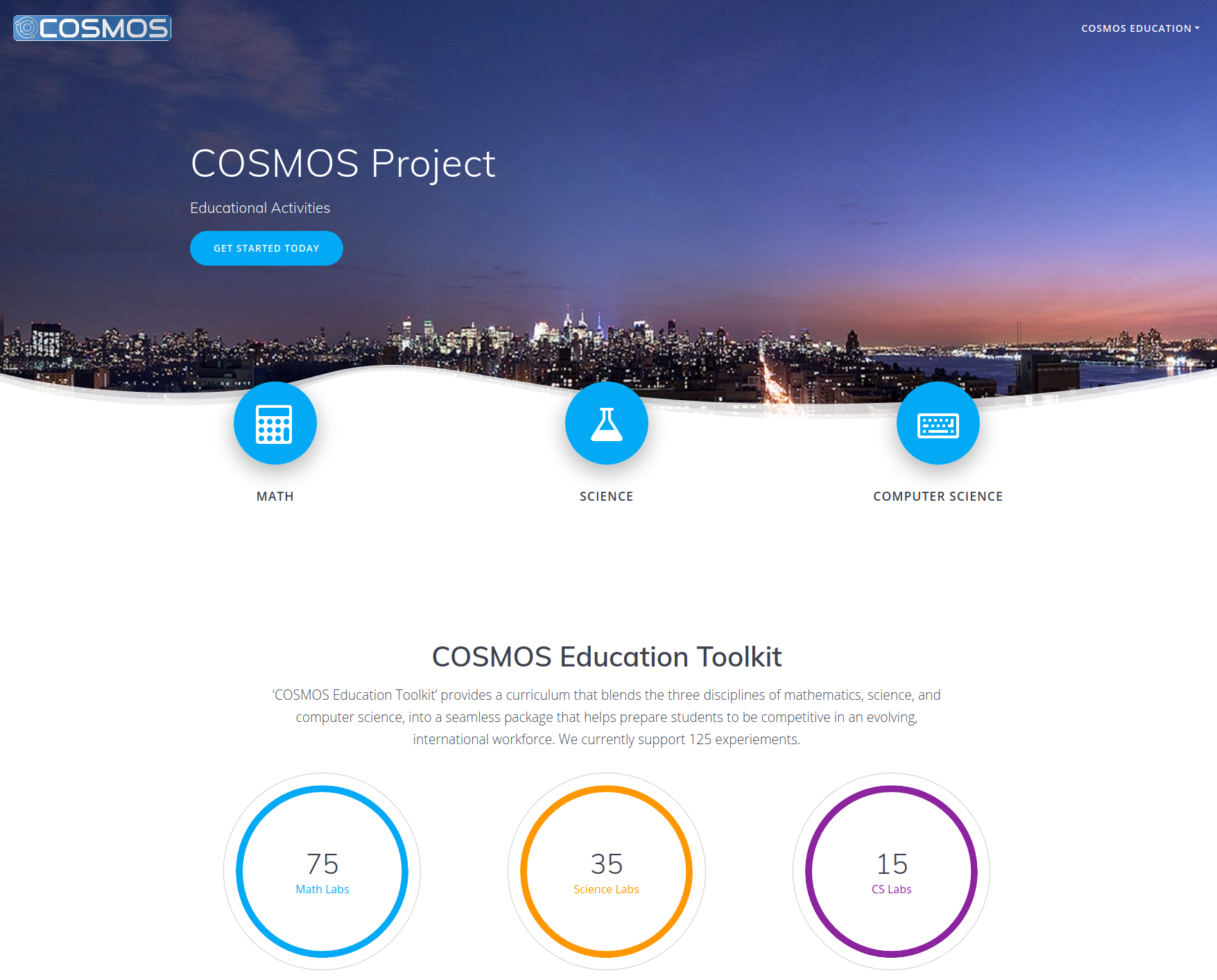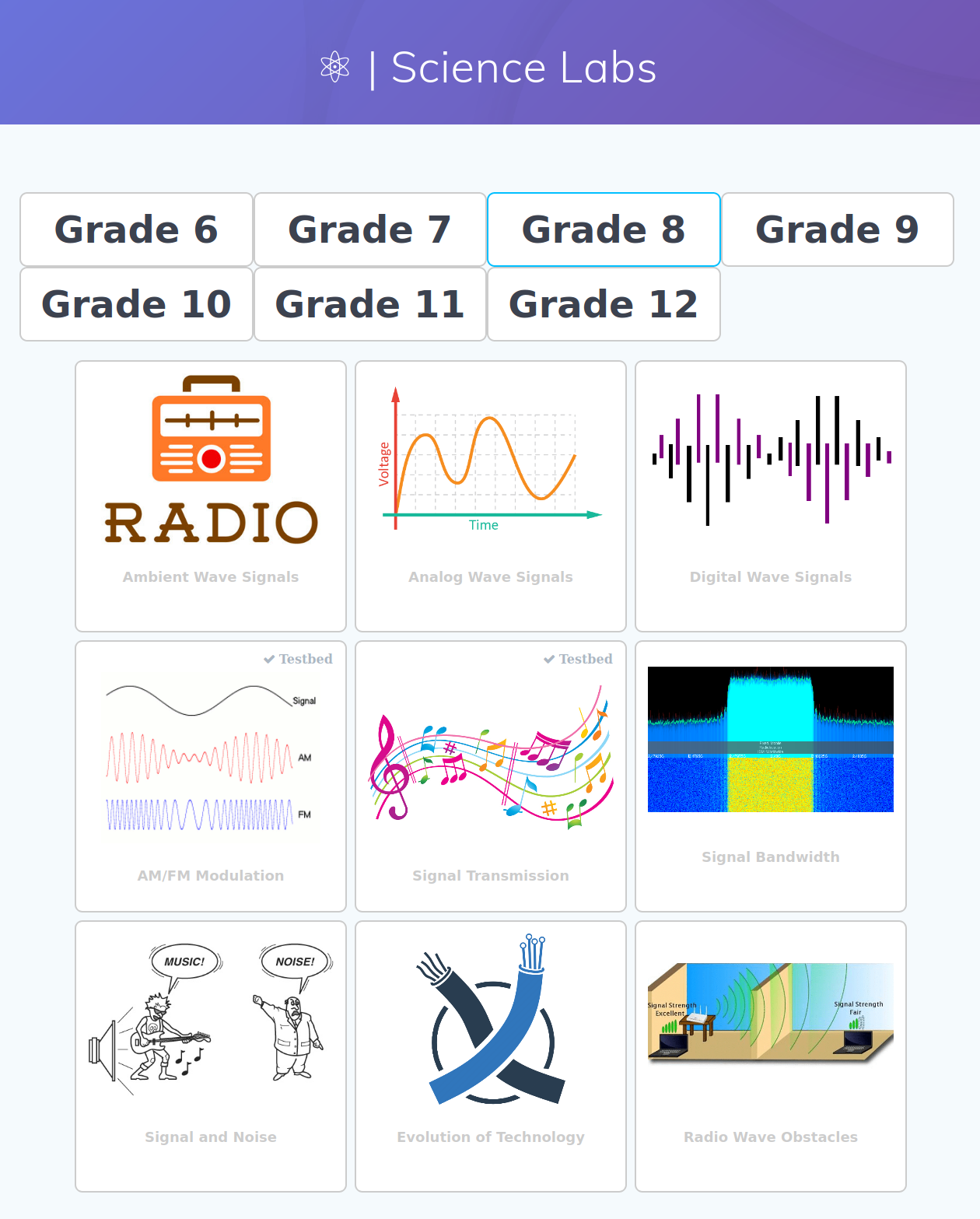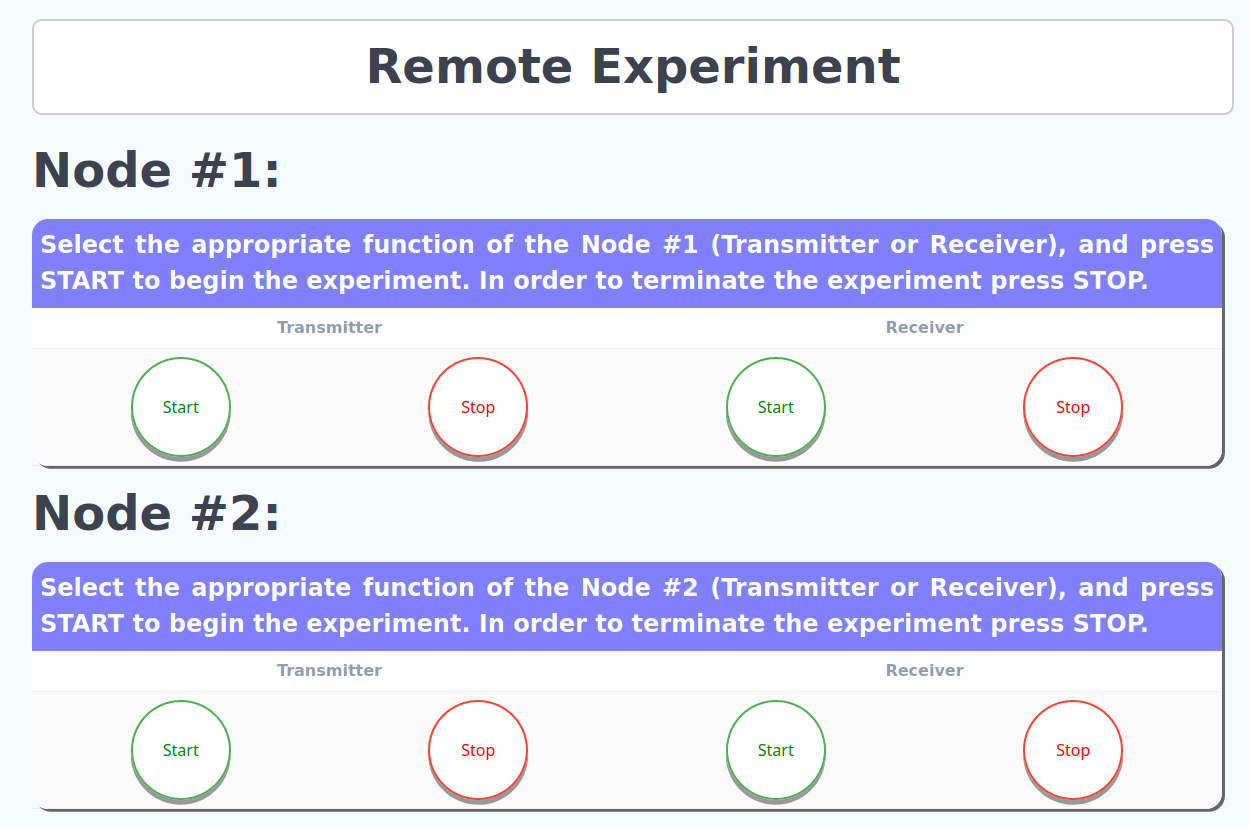Site Navigation
Signal Transmission
Authors:
- Panagiotis Skrimponis, New York University: ps3857[at]nyu.edu
- Nikos Makris, New York University
Last updated: September 23, 2020
Description
Teaching the properties of waves by visualizing amplitude modulated (AM) and frequency modulated (FM) wave signals in time and frequency domain.
Educational Standards
MS-PS4-1 Develop a model and use mathematical representations to describe waves that include frequency, wavelength, and how the amplitude of a wave is related to the energy in a wave.
Experiment Execution
First you need to complete all the steps described in the tutorial. Then, you need open the web interface of either one of the nodes. Let's open http://localhost:8081. If you did all the steps correctly you should be able to see the following,
Press on the 'Science' radio button to the open the science lesson plan webpage, where you need to select 'Grade 8'.
Observe that some of the lessons in the top right corner have an indication that they can be executed on COSMOS website. While in the 'COSMOS Education Toolkit' we have more than 100+ lesson plans and labs, we currently support only few for remote experimentation. We will keep updating the website and the experiments until all of them can be executed both locally and remotely.
Then, you need to select 'Signal Transmission'. In the new webpage we can see a detailed description of the experiment, the educational standards that we focus on, and a detailed description of the experiment execution. In the experiment execution you can expand the 'Remote Experiment' section.
- In this experiment, the students should first start the receiver. They should press
STARTeither under the receiver onnode #1ornode #2. In this tutorial we considersdr2-s1-lg1asnode #1andsdr2-md1asnode #2. The receiver will start listening to a specific center frequency (400 MHZ, 2.4 GHz, and 5 GHz), and will demodulate any incoming frequency modulated (FM) signal. The receiver will then create a TCP server at port8100to stream the audio to the local host.
- Then the students should start the attached TCP client application that will connect to the remote server in order to play the incoming audio. At first the students should hear just noise.
- Then the students should start the transmitter. They should press
STARTeither under the transmitter on the other node. Ifnode #1is a receiver thennode #2is a transmitter, and ifnode #1is a transmitter thennode #2is a receiver. Then the students should start observing the spectrum of the signal and make any observations.
- When the students would like to finish the experiment, they should press
STOPon both transmitter and receiver. In the end the students will compare their observations for the FM signal and state their interpretations. After all students complete their handouts there will be a share out with observations and comments.
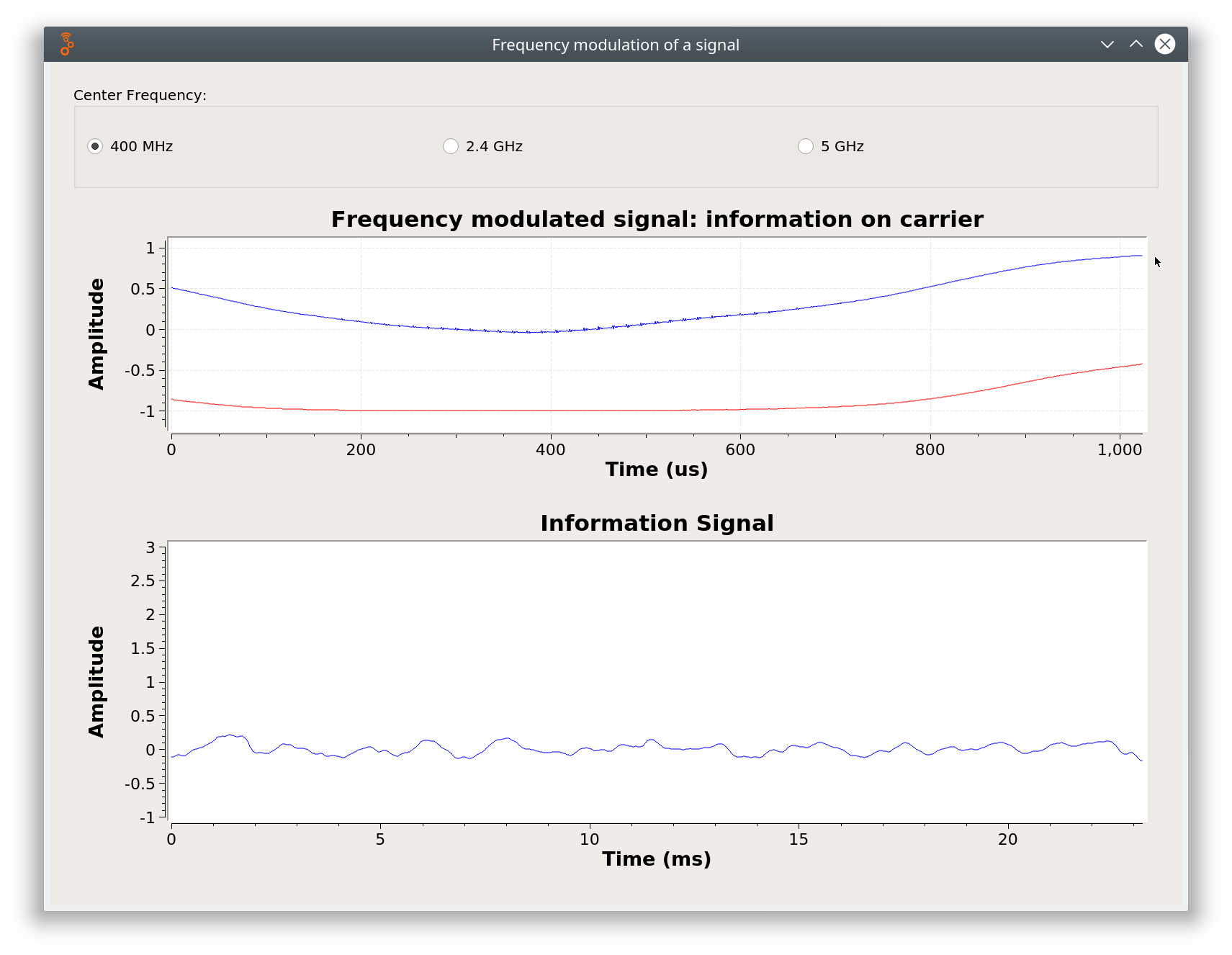 | 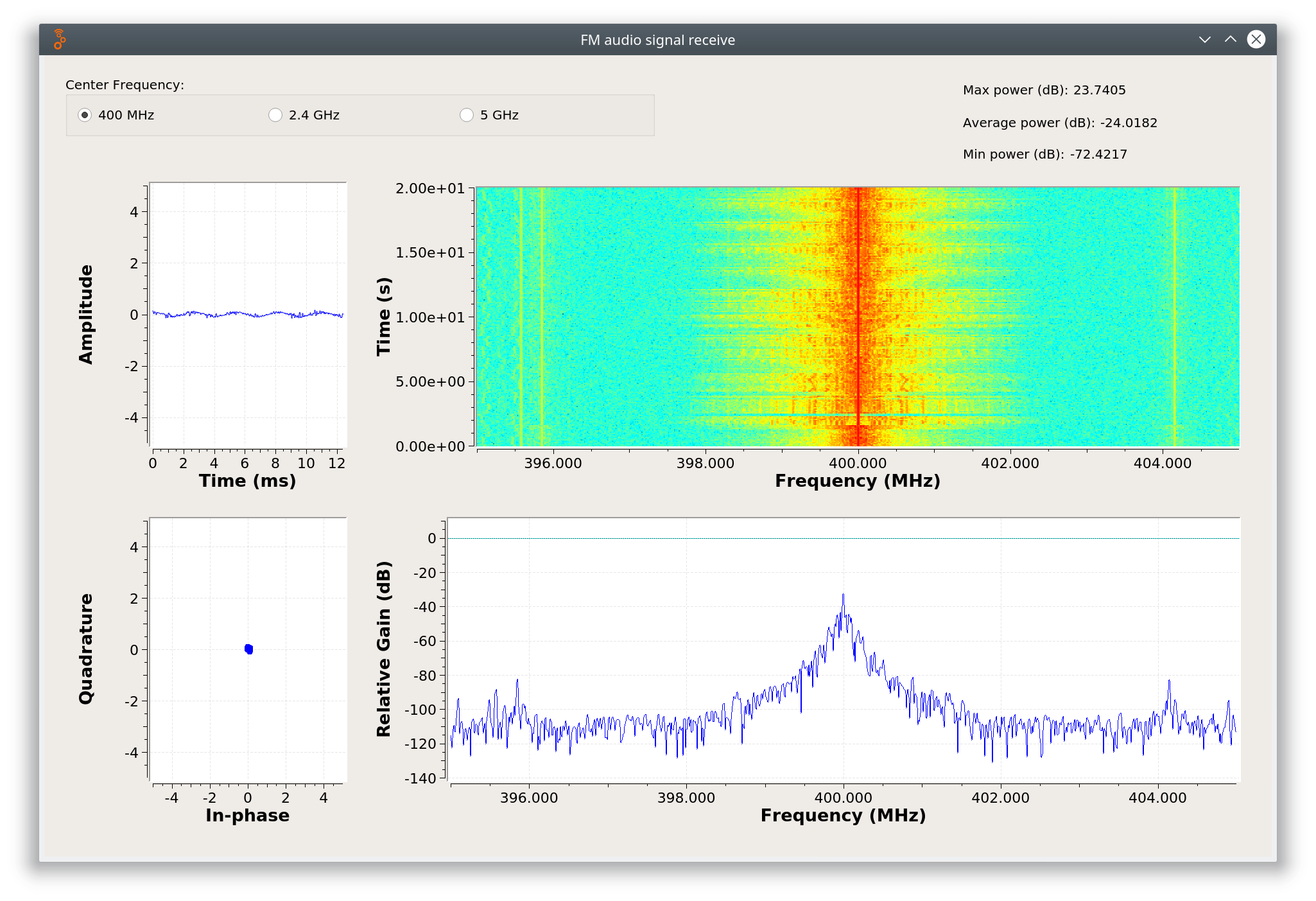
|
| (a) FM signal at the transmitter | (b) FM signal at the receiver |
Attachments (5)
- toolkit-web.png (971.4 KB ) - added by 5 years ago.
- tookit-science.png (468.7 KB ) - added by 5 years ago.
- toolkit-experiment.png (75.5 KB ) - added by 5 years ago.
- fm_tx.png (101.0 KB ) - added by 5 years ago.
- fm_rx.png (623.2 KB ) - added by 5 years ago.

